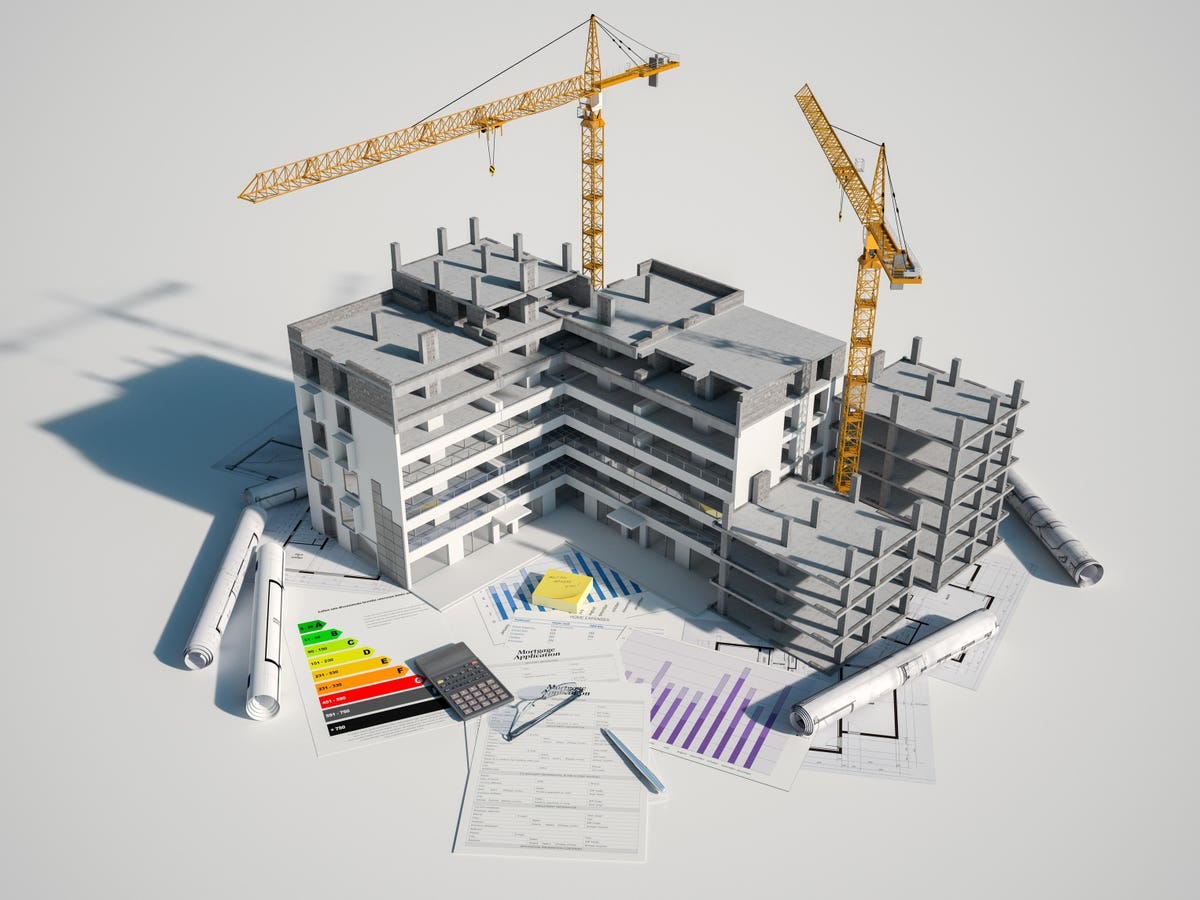The death of feasibility studies (part 1)
Why 6 weeks and $25,000 just don't work to appraise opportunities
A friend recently told me that, after 18 months of development work, they shelved a $180 million mixed-use project in Dubai.
18 months!
The feasibility study? A 247-page masterpiece that took four months to complete and cost $85,000.
The problem?
By the time it was finished, the market had shifted, interest rates had climbed 200 basis points, and three competing projects had launched within a 2km radius.
The feasibility study was technically perfect. But it was also completely useless.
This isn't an isolated incident. Across the Gulf, North America, and Europe, I'm seeing the same pattern: developers spending months and tens of thousands on feasibility studies that are outdated before the ink is dry.
The traditional feasibility study is dying. And it's about time.
But here's what most developers don't realise: the replacement isn't just faster or cheaper. It's fundamentally different. It's continuous, dynamic, and powered by real-time data that would have been impossible to access just three years ago.
Today's Brief:
Why traditional feasibility studies have become a liability
The hidden costs nobody talks about
What leading developers are using instead
The technology stack that's changing everything
How to build your own real-time feasibility system
Why traditional feasibility studies have become a liability
1. The time trap
Traditional feasibility studies take 12-16 weeks on average. In today's market, that's an eternity.
Consider what can change in four months:
Interest rates (we've seen 175+ basis point swings in 18 months)
Construction costs (up 5% year-over-year in major Gulf markets)
Planning regulations (Dubai alone introduced 6 new development guidelines in 2024)
Competitive landscape (average time from announcement to groundbreaking has fallen to 12 months)
By the time you receive your beautifully bound feasibility report, the assumptions underpinning every calculation may have fundamentally shifted.
2. The snapshot fallacy
Traditional studies capture a moment in time. But real estate development isn't a photograph - it's a movie.
Markets are dynamic systems. Consumer preferences evolve. Technology disrupts established patterns. Economic conditions fluctuate.
Yet most feasibility studies present their findings as if market conditions will remain static for the next 3-5 years. This isn't analysis; it's wishful thinking.
3. The consultant black box
Here's an uncomfortable truth: most feasibility consultants are generalists trying to analyse increasingly specialised markets.
The consultant analysing your build-to-rent project in Riyadh probably worked on a shopping centre in Miami last month, and a logistics facility in Manchester before that.
They rely on standardised methodologies, generic market reports, and publicly available data. The insights that would actually give you an edge (hyperlocal demand patterns, emerging demographic shifts, competitor vulnerabilities) never make it into the final report.
4. The precision illusion
Traditional feasibility studies love decimal points. They'll tell you the projected IRR is 14.7%, not 15%. They'll forecast absorption at 2.3 units per month, not 2 or 3.
This false precision creates dangerous overconfidence. The reality is that most feasibility assumptions are educated guesses wrapped in sophisticated financial modelling.
A study might project costs within 5% accuracy, but completely miss a regulatory change that adds 18 months to the approval process.
5. The static decision framework
Perhaps most critically, traditional feasibility studies are designed for a binary decision: proceed or abandon.
But development isn't binary. It's a series of incremental decisions and course corrections. The ability to adapt your project as conditions change is often more valuable than perfect initial assumptions.
Traditional studies don't help you navigate this ongoing decision-making process. They give you a verdict, not a framework for continuous evaluation.
If you ask most developer Directors/CEO’s/Managers, they’ll tell you the secret sauce is their gut feeling. Their ability to know what’s round the corner.
I translate this as, our tools are too static.
The hidden costs nobody talks about
The obvious cost of a feasibility study is the consultant fee - typically $25,000-$100,000 for major projects.
But the hidden costs are far more damaging:
Opportunity Cost: While you're waiting for your study, competitors are moving. In fast-moving markets like Dubai's Downtown or Riyadh's King Salman Park district, a 4-month delay can mean the difference between first-mover advantage and playing catch-up.
Decision Paralysis: Comprehensive studies often highlight every possible risk, creating analysis paralysis. I've seen developers commission second and third opinions, extending decision timelines to 8+ months.
False Confidence: Detailed reports can create overconfidence in fundamentally flawed projects. The most beautifully presented feasibility study can't overcome poor location, bad timing, or inadequate capital.
Revision Costs: When market conditions change (and they always do), updating a traditional study requires essentially starting over. Many developers end up spending $200,000+ on feasibility work for a single project.
What leading developers are using instead
The smartest developers I know aren't abandoning feasibility analysis—they're revolutionising it.
Instead of one comprehensive study, they're building continuous intelligence systems that provide real-time insights throughout the development lifecycle.
Real-Time Market Dashboards
Leading developers now maintain live dashboards that track:
Competitor pricing and absorption rates (updated weekly)
Planning application pipelines (new applications, approvals, rejections)
Economic indicators specific to their target demographics
Construction cost indices by trade and material type
Rental/sales velocity by micro-location
Rapid Validation Frameworks
Instead of comprehensive studies, many developers now use rapid validation frameworks:
Week 1: Core assumptions testing
Is the location thesis still valid?
Have demographic patterns shifted?
What's the competitive pipeline?
Week 2: Financial stress-testing
Sensitivity analysis on key variables
Scenario planning for different market conditions
Quick ROI modelling across multiple strategies
Week 3: Execution pathway mapping
Regulatory timeline validation
Construction feasibility check
Capital requirements confirmation
Week 4: Go/no-go decision with continuous monitoring framework
This approach reduces time-to-decision from 16 weeks to 4, while creating a foundation for ongoing project optimisation.
Hyperlocal Data Intelligence
In any given city, all players use the same data. Government, public, private data subscriptions, the latest JLL report.
The money is in hyperlocal, unique intelligence.
Walking patterns and dwell times around potential sites
Social media sentiment analysis for specific neighborhoods’s
Utility usage patterns indicating actual occupancy (not just sales)
Transportation pattern analysis using mobile location data
The technology stack that's changing everything
Modern feasibility analysis depends on technology that didn't exist five years ago:
1. Real-Time Data Aggregation
Property Portal APIs: Live pricing and inventory data from Bayut, Property Finder, Dubizzle
Government Data Feeds: Planning applications, permit approvals, demographic updates
Economic Data APIs: Interest rates, construction costs, employment statistics
Satellite Imagery: Construction progress, traffic patterns, area development
2. AI-Powered Analysis
Natural Language Processing: Extracting insights from planning documents, market reports, news
Computer Vision: Analysing site conditions, construction progress, competitive projects
Predictive Modelling: Forecasting market conditions, pricing trends, absorption rates
Sentiment Analysis: Social media and review data for location desirability
3. Automated Reporting
Dynamic Dashboards: Real-time updates without manual intervention
Alert Systems: Notifications when key metrics cross predefined thresholds
Scenario Generators: Instant modelling of different development strategies
Competitive Intelligence: Automated tracking of competitor moves and market positioning
4. Collaborative Platforms
Stakeholder Portals: Real-time sharing with investors, partners, lenders
Version Control: Tracking assumption changes and their impact on project viability
Decision Audit Trails: Documentation of why decisions were made and when assumptions changed
How real-time feasibility systems should be built
You don't need a million-dollar budget to implement next-generation feasibility analysis. Here's how to start:
Phase 1: Data Foundation (Month 1)
Set up automated data collection:
Property portal monitoring for your target areas
Government planning application trackers
Economic indicator feeds
Competitor intelligence gathering
Phase 2: Analysis Framework (Month 2)
Build dynamic modelling capabilities:
Spreadsheet-based scenario generators (upgrade to software later)
Key assumption sensitivity tables
Alert systems for major market changes
Weekly competitor intelligence reports
Phase 3: Decision Framework (Month 3)
Create systematic evaluation processes:
Rapid evaluation templates for new opportunities
Standard criteria for go/no-go decisions
Continuous monitoring protocols for active projects
Stakeholder communication systems
Phase 4: Advanced Intelligence (Months 4-6)
Implement sophisticated analysis:
AI-powered market forecasting
Automated competitive intelligence
Hyperlocal demand modelling
Real-time ROI optimisation
The investment thesis for dynamic feasibility
This isn't just about speed—it's about fundamentally better decision-making.
Traditional feasibility studies optimize for a single point in time. Dynamic systems optimize for changing conditions over time.
In volatile markets (which is all markets in 2025), this adaptability is worth far more than precision in initial assumptions.
Consider two developers evaluating the same site:
Developer A (Traditional approach):
Spends 4 months on comprehensive feasibility study
Makes go/no-go decision based on fixed assumptions
Proceeds with original plan regardless of changing conditions
Discovers market shifts 18 months into construction
Developer B (Dynamic approach):
Makes initial evaluation in 4 weeks
Continuously monitors market conditions
Adjusts project scope, timing, and positioning based on real-time intelligence
Adapts to market shifts before they become problems
In most markets, Developer B will outperform Developer A in IRR, while taking significantly less development risk.
The bottom line
Traditional feasibility studies were designed for a slower, more predictable world. In 2025, they're not just inadequate - they're actively harmful.
The future belongs to developers who can evaluate opportunities quickly, adapt to changing conditions continuously, and make decisions based on real-time intelligence rather than static assumptions.
This isn't about abandoning rigorous analysis. It's about evolving from periodic evaluation to continuous intelligence.
The developers who make this transition now will have an enormous advantage over those still trapped in 20th-century feasibility processes.
The market won't wait for your 247-page report. But with the right tools and framework, you won't need it to.





